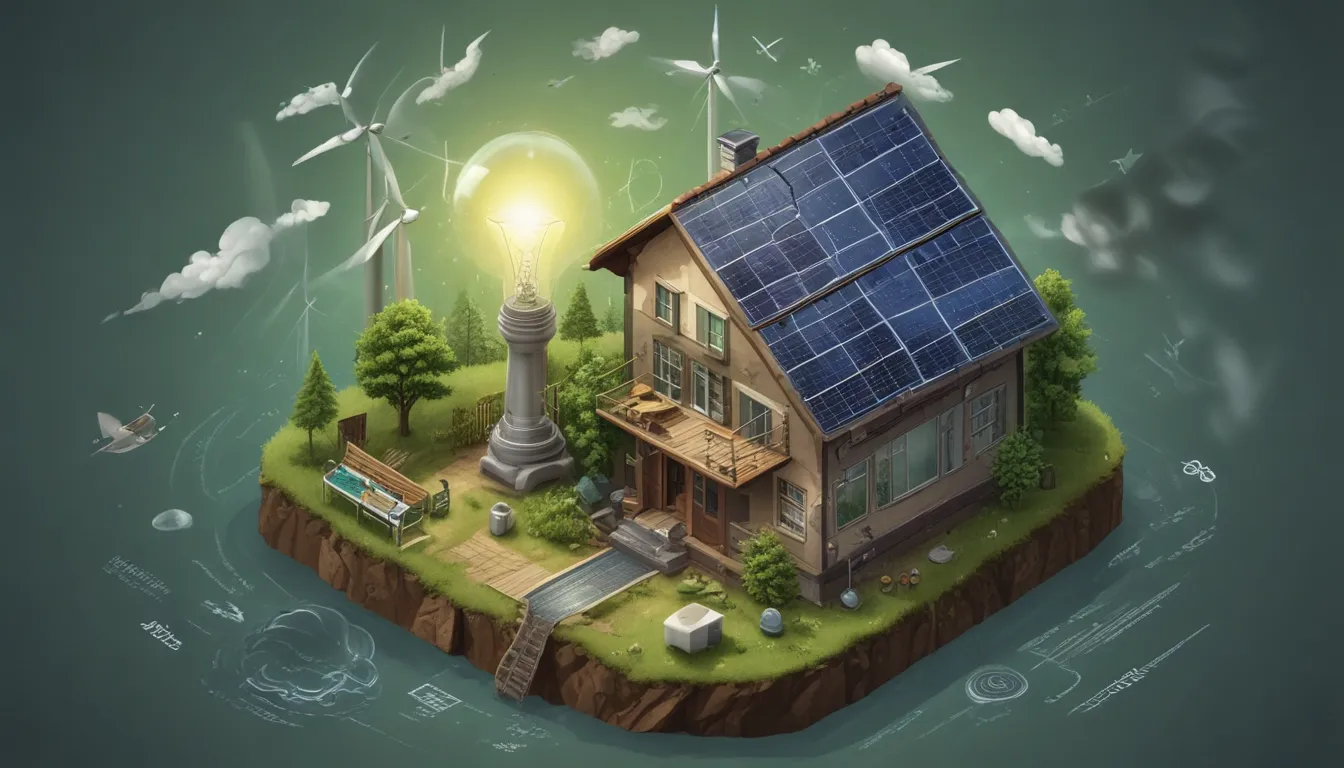A Note About Images: The images used in our articles are for illustration purposes only and may not exactly match the content. They are meant to engage readers, but the text should be relied upon for accurate information.
In a world where sustainability and environmental consciousness are increasingly important, renewable energy sources have taken center stage. From solar and wind power to hydropower and geothermal energy, these sources have the potential to revolutionize the way we generate electricity and power our lives. In this article, we will delve into the enigmatic world of renewable energy sources and explore some fascinating facts about them. These facts will shed light on the incredible potential and possibilities that renewable energy holds for our planet’s future.
The Power of Solar Energy
- Solar power is the most abundant renewable energy source, harnessing the sun’s energy to meet global electricity demands for an entire year.
- Solar energy is derived from sunlight, which is available in abundance and can generate electricity using solar panels.
- The sun radiates enough energy in an hour to meet the global energy demand for a whole year!
Harnessing the Wind
- Wind power is one of the fastest-growing renewable energy sources.
- Wind turbines harness the power of the wind to generate electricity.
- With advancements in technology, wind power has become a viable solution for meeting the world’s energy needs.
- Wind energy capacity has doubled in the last decade.
The Reign of Hydropower
- Hydropower is the largest renewable energy source worldwide, accounting for over 90% of renewable energy production.
- Hydropower plants generate vast amounts of electricity and can be found in many countries.
The Heat Beneath Our Feet
- Geothermal power plants extract heat from beneath the Earth’s surface to generate electricity.
- This renewable energy source is reliable, consistent, and sustainable.
Biomass Energy: A Sustainable Solution
- Biomass energy utilizes organic materials to produce power.
- By converting organic matter into energy, biomass power plants reduce waste and decrease reliance on fossil fuels.
Tapping into Tidal Power
- Tidal power plants harness the energy of ocean tides.
- This renewable energy source is predictable and consistent, making it a promising option for coastal regions.
The Affordability of Solar Panels
- The cost of solar panels has significantly decreased in recent years.
- Advancements in technology and economies of scale have made solar panels more accessible and affordable than ever before.
Reducing Greenhouse Gas Emissions
- Renewable energy sources play a crucial role in reducing greenhouse gas emissions.
- By transitioning to renewables, we can mitigate climate change and work towards a cleaner and more sustainable future.
Growth in Renewable Energy Investments
- Investments in renewable energy sources are rapidly increasing worldwide.
- Governments, corporations, and individuals are investing heavily in renewable energy development.
Job Creation in Renewable Energy
- The renewable energy sector provides substantial job opportunities globally.
- The industry generates employment in fields such as manufacturing, installation, maintenance, and research.
The Boundless Potential of Renewable Energy
- With advancements in technology and increasing investments, the potential of renewable energy sources is virtually limitless.
- By exploring and harnessing these resources, we can create a sustainable future for generations to come.
Renewable energy sources have become an integral part of our pursuit for a cleaner and sustainable future. Embracing renewable energy in our daily lives can help reduce our carbon footprint, combat climate change, and create a more sustainable world. By harnessing the power of wind, water, and the sun, we can pave the way for a greener future.
FAQs
- What is renewable energy?
-
Renewable energy refers to energy sources that are naturally replenished, such as sunlight, wind, water, and geothermal heat.
-
How do renewable energy sources work?
-
Renewable energy sources convert natural resources into energy through various technologies, such as solar panels and wind turbines.
-
Why is renewable energy important?
-
Renewable energy offers a cleaner and more sustainable alternative to traditional fossil fuels, helping reduce greenhouse gas emissions and combat climate change.
-
Are renewable energy sources cost-effective?
-
While the initial investment in renewable energy technologies can be high, they offer long-term cost savings and are becoming increasingly competitive with fossil fuels.
-
Can renewable energy sources meet our energy demands?
- Yes, with advancements in technology and increased investment, renewable energy sources have the potential to meet a significant portion of our energy needs while reducing environmental impact.
Our commitment to delivering trustworthy and engaging content ensures that the facts we share are not only fascinating but also credible. Trust in our dedication to quality and authenticity as you explore and learn with us.






